
   
     Mull's mammals
Mull's mammals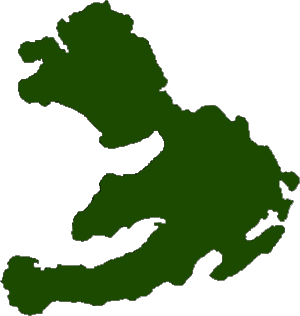
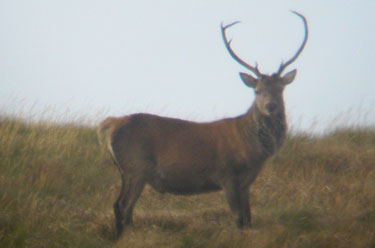
|
Red
Deer
– Found
on Mull all year this is
the largest wild mammal
living in Britain, they
live for 10 to 15 years
with hinds usually
living longer than
stags. Red Deer antlers
are made of bone and not
horn as is the case in
cattle and sheep. The
hinds start breeding at
between 2 and 3 years
old although woodland
Deer can be earlier
depending on forage. The
rut is from mid
September to mid
November and gestation
is approximately 33
weeks, with each hind
only producing a single
calf between mid May and
Early July. Red Deer
calves are 6 to 7 kgs or
13 to16 lbs at birth and
stay with their mother
for 2 years. |
|
Otter
- Found
on Mull all year this
endearing mammal is
larger than people think
with dog Otters reaching
about 4 feet or 1.2
metres long, its nearest
relative is the Badger.
Otters mature at 2 years
old and live for between
10 and 15 years, but
cubs suffer a very high
mortality rate. Otters
breed at all times of
the year with gestation
about 9 weeks, with 2
cubs being the average
litter size. The cubs
eyes open at about 4 to
5 weeks old and they
learn to swim at about 3
months old; they stay
with their mother for
about 18 months. |
|
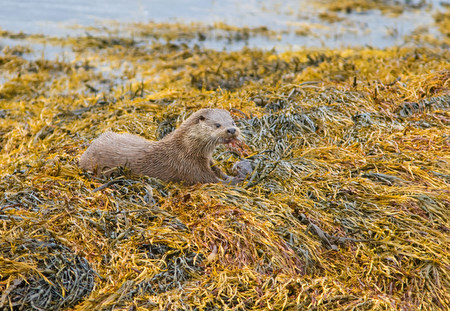
|

|
Common
Seals
– Found
on Mull all year these
are the smaller of the
two types of seals found
around the coast of Mull
about 1.5 metres or just
under 5 feet in length,
Bulls are larger than
cows. They have
attractive mottled coats
ranging from dark brown
to pale grey/white, the
calves are usually
black. Common Seals
calve in late June or
July and there calves
can swim within a few
hours of being born. In
more crowded colonies
calf deaths can be high
from either getting lost
or being trampled, but
seals can live for over
30 years. Common seals
can swim at up to 25
miles per hour and dive
to 200 meters or 650
feet and can stay under
water for 15 minutes. |
|
Grey Seals
– Found
on Mull all year this is
the larger of our seals
with the roman nosed,
dog like faces, they can
reach up to 2.3 meters
or 7.5 feet, they are
more uniform in colour,
bulls can be almost
black, with cows much
lighter, both are paler
underneath. The calves
are born with silky
white fur a throwback to
the ice age; they
helplessly rely on their
mothers for up to 4
weeks after being born.
There are about 100,000
Grey seals around the
coast of Great Britain
which is 1/3 of the
world’s population and
so is very precious.
In the
waters around Mull are
Minke Whales, Killer
Whale, Bottle Nosed
Dolphins, Common
Dolphins, Risso’s
Dolphins, Harbour
Porpoise and worth a
mention although not a
mammal the magnificent
Basking Shark. |
|
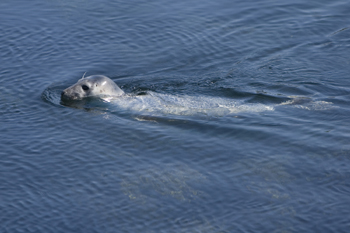
|

|

| Other
Mammals to be found on
Mull at all times of the
year are Fallow deer,
Mountain Hares, Rabbits,
Polecat, Mink, Stoats,
Feral Goats, Feral Cats,
Basking Sharks and of
course Highland Cattle
and Hebridean Sheep. |
|

|
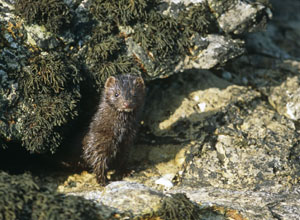
|

|
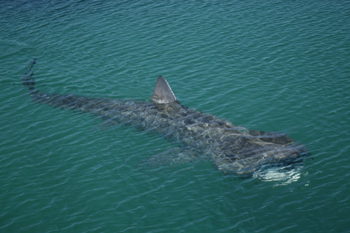
|
| Mull is a
naturalists' heaven with several
ecologies wrapped in one small
island, but we wouldn't have seen
a quarter of what's on offer
without Pam & Arthur's insider
knowledge. You get a class act
when you hire them for a whole
day, along with some comical
patter and Pam's homemade veg
soup, sarnies, flapjacks and
cake.Sharon
Ring,
Sainsbury's Magazine March 2007 |
|
Pam
& Arthur Brown
Ardrioch Farm, Dervaig
Isle of Mull
Argyll PA75 6QR
|
[email protected]

|

01688
400415
Mobile 07780 600367
|
 
|
This is the web
site of Pam & Arthur Brown,
Ardrioch Farm, Dervaig, Isle of
Mull. PA75 6QR
|
|
|

